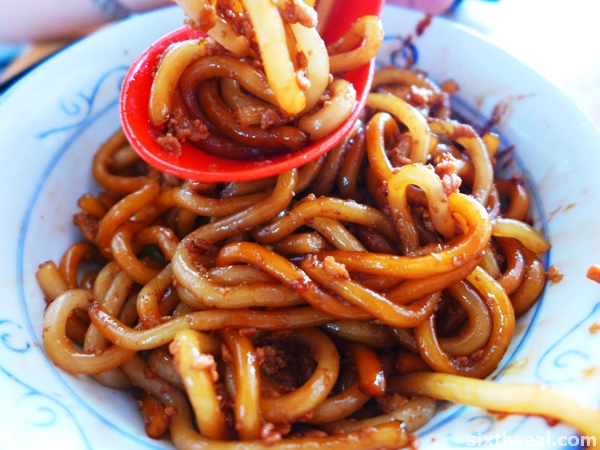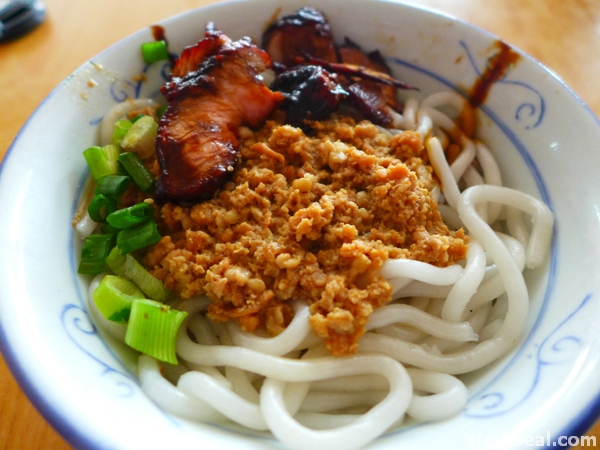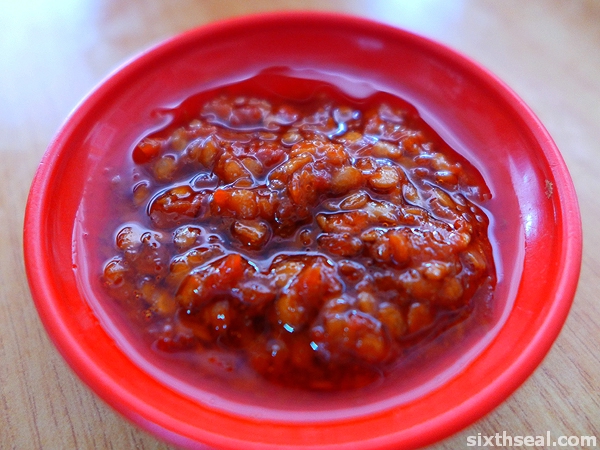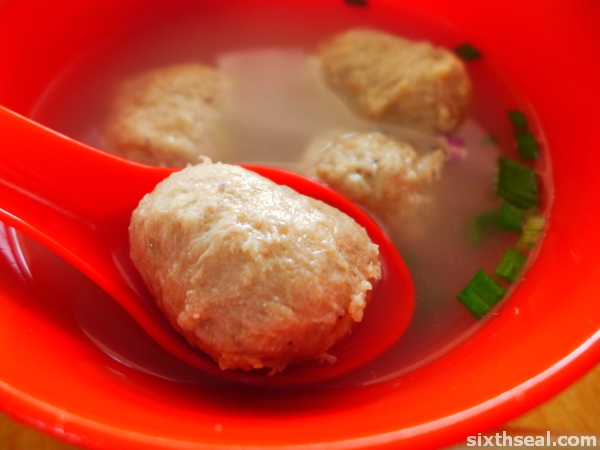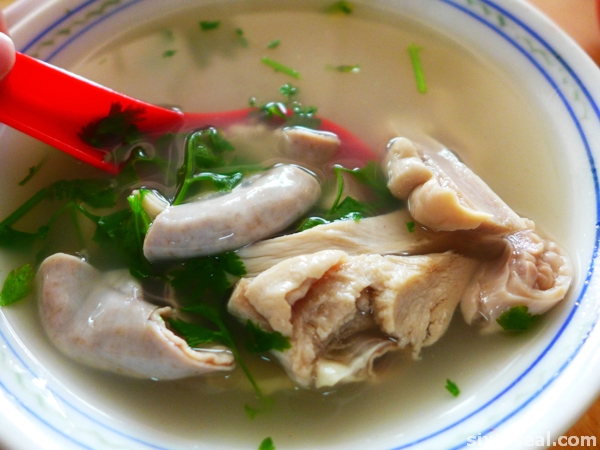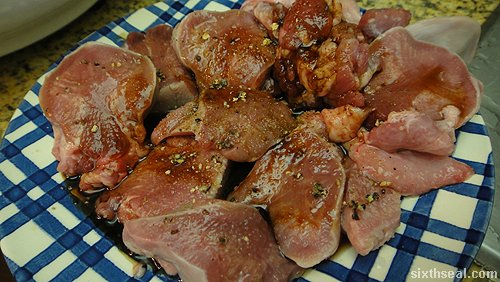I’m back in my hometown, eating delicious food you can really only get here – at least, if you want the authentic stuff! 🙂
1. Char Kueh Tiaw Omelet
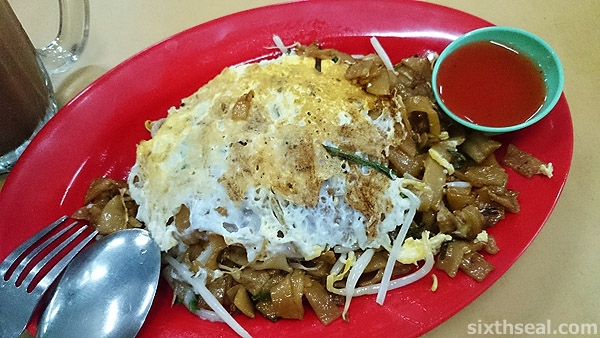
Yeah, that’s what I’m calling it! It has been around for over 40 years (no kidding) and this particular way of cooking it is a Sibu institution. I first ate it as a kid in Kwok Ching Coffee Shop (now defunct) and this is the son carrying on the legacy, cooking it the exact same way.
How do you get char kueh tiaw into an omelet? The CKT is cooked first and even though it’s a simple dish – spring onion and bean sprouts are the only ingredients – it tastes superb in its simplicity.

The CKT is dropped on a cracked egg on a hot wok, flipped and served. This technique has been copied by many other cooks in Sibu but there is only one heir of the original and he does it best! This stall is located at Aloha Cafe and it’s only RM 3.30.
2. Twice Cooked Tapah Fish Noodles

There are RM 35 bowls of this stuff out there. I had that with my better half when we came back last time at Min Kwong. I can’t justify eating that all the time so this is an equally good (if not better) version from Y2K Cafe. It’s RM 12 and is cooked in the traditional Foochow style – the noodles are first *fried* before being *stewed* in a hearty soup.

That means you get both the Maillard reaction and caramelization on the noodles from frying in the fiery hot wok, making it taste wonderful, before it’s softened in the rich seafood broth. Infinitely satisfying, and a local classic. You can drink the wonderfully tasty soup after you’ve finished your noodles too – it’s full of flavor!
3. Kampua Mee with Pork Tripe and Pig Liver Soup

Yup, this is our famous kampua noodles. I always like to add a bowl of pig liver soup to my order (RM 4) coz it makes the noodles taste even better with that rich, mineral-y taste that liver has. I also like pork tripe soup (RM 5) coz of the chewy texture and the acidic dipping sauce it comes in.
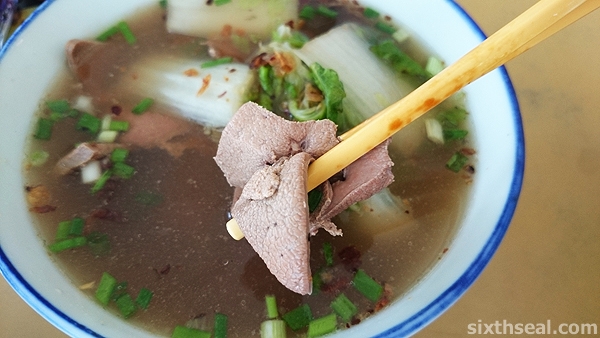
It’s a perfect side dish(es) for kampua noodles – the offal works very well with the slices of BBQ pork in the noodle dish and I always love drinking the soup after I’m done – alternating between the clear pork tripe soup and the dark iron-y pig liver soup with tendrils of liver. It’s always the *first* thing I eat when I come back and this one was at Yum Yum Cafe.

